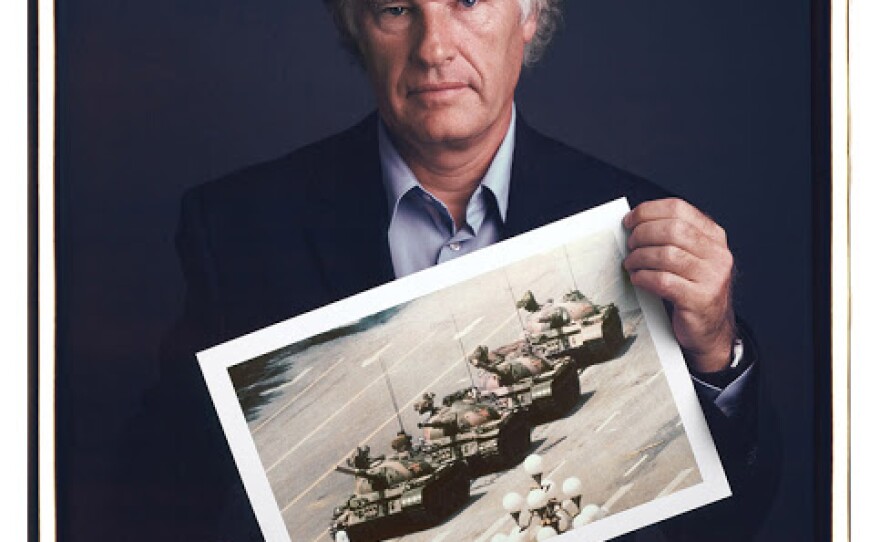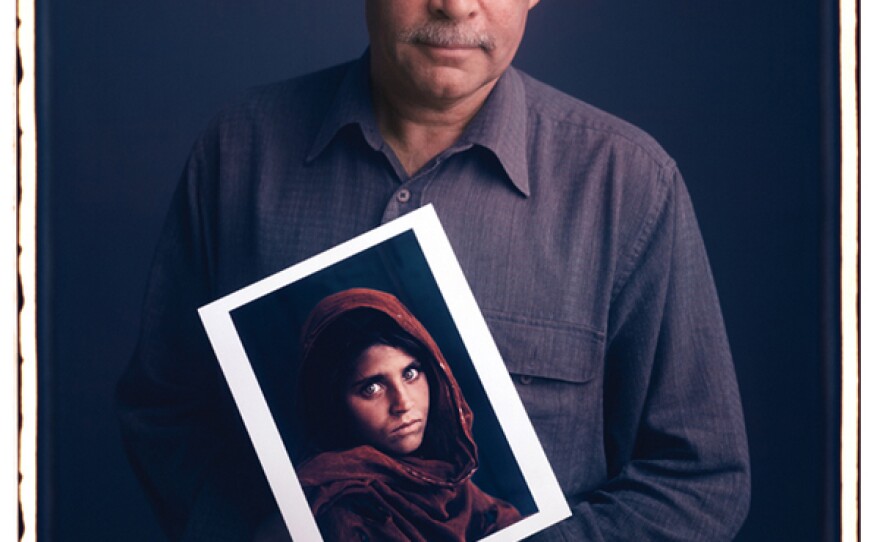The photo of a young girl burned by napalm in Vietnam. "Tank man" in Tiananmen Square. Johnny Cash giving the finger to the camera in San Quentin. The Beatles having a pillow fight.

Tim Mantoani wants you to know who took these famous photographs. The San Diego-based photographer has been working on a project titled “Behind Photographs: Archiving Photographic Legends” since 2006. He’s made portraits of more than 150 photographers, each holding an iconic image they shot.
“That way you can appreciate both the photographer and the image at the same time,” Mantoani said.
“It’s a great opportunity to celebrate these photographers who have dedicated their life to the craft.”
Thirty-one selected portraits will be on view at the La Jolla location of the Museum of Contemporary Art San Diego through Jan. 10.
Mantoani shoots the portraits on a 20x24 Polaroid camera. There are only a handful of these massive cameras in existence. It prints out a poster-size polaroid image.


He rented one of the cameras in San Francisco and rallied a few photographer friends to sit for him, including legendary music photographer Jim Marshall, who took the famous photograph of Johnny Cash in San Quentin prison.
After he peeled back the portrait of Marshall (it really is a giant Polaroid!), Mantoani had an idea.
“Just by chance I said why don’t you write a little story about the image on the bottom of the Polaroid explaining the story behind the photograph,” Mantoani said. That feature of a handwritten signature and story on the bottom of each image became a central part of the project. By the way, Cash was not flipping the photographer the bird. Instead, Marshall asked him to do “a shot for the warden.” Cash rebelliously complied.


Mantoani, an accomplished commercial photographer, who also had a television show on KPBS-TV called “Snapshot,” started the project because he missed shooting on film. “2006 was the first year I hadn’t picked up a film camera, everything had gone digital,” Mantoani said. He also recognized an opportunity to document history.
“I thought there’s this twin disappearing act, there’s going to be photographers fading away and these film companies, Polaroid and Kodak going away,” Mantoani said. He took portraits of both Julius Shulman and Mary Ellen Mark before they died.
Mantoani says his almost decade-long project will be coming to an end in the next two years.
“I don’t think I can do this much longer. They’re not making the film for these cameras any more and the last amount of film stock for this format is depleting,” Mantoani said.
The MCASD exhibit will be the first time the actual polaroid images will be on view.
“The project itself has been so rewarding. I had no idea it would evolve to this.”






